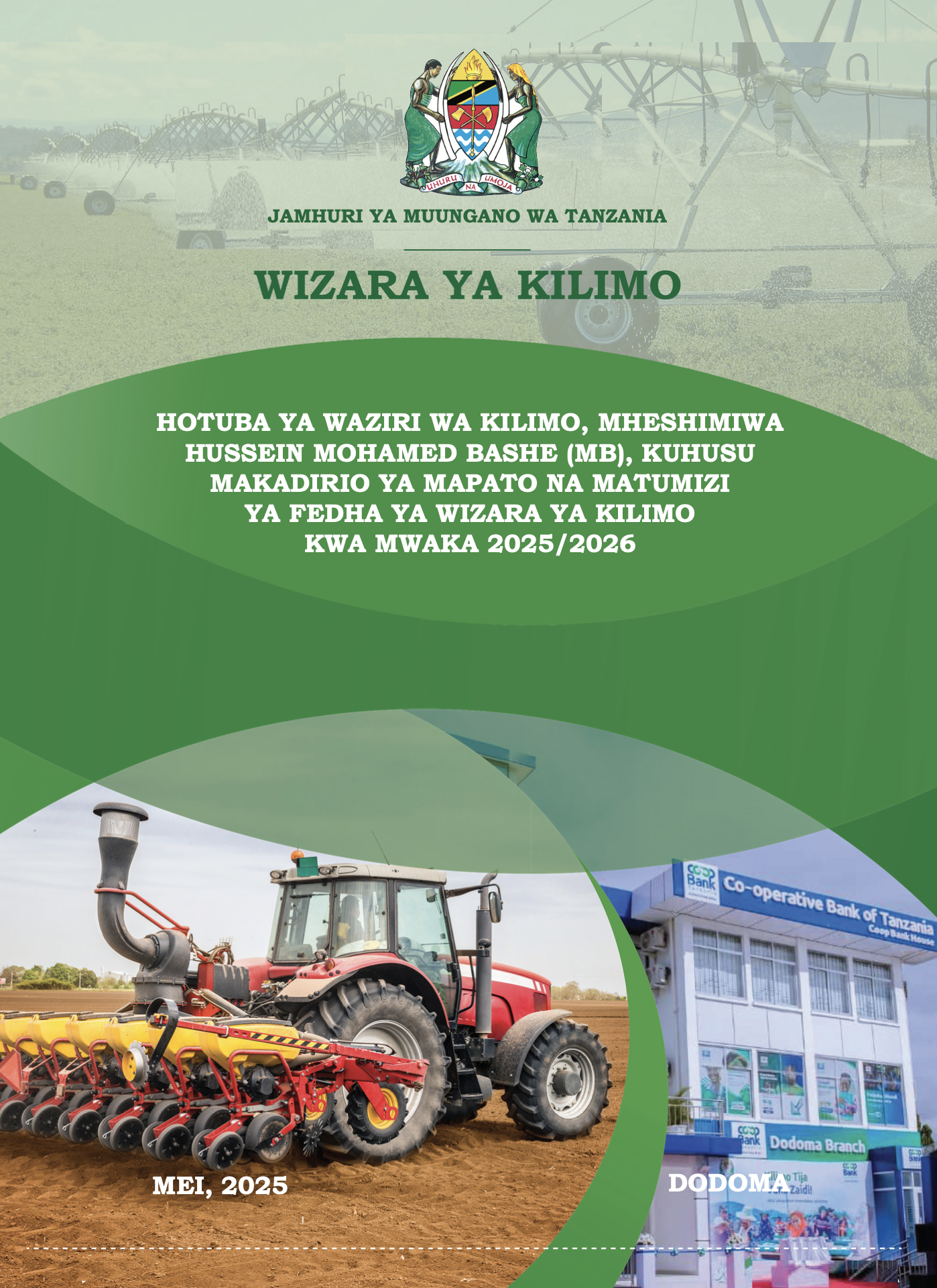
By Special Correspondent | Dodoma
DAR ES SALAAM – In a bold push to modernise and commercialise its agriculture sector, Tanzania has unveiled its most ambitious agricultural budget—TZS 1.243 trillion for the 2025/2026 financial year. This represents a staggering 324% increase compared to 2021/2022, signalling the government’s determination to elevate farming into a business-oriented, youth-powered, and climate-smart sector.
Corridors as Catalysts: AGCOT Takes Off
One of the budget’s centrepieces is the national rollout of the Agricultural Growth Corridors of Tanzania (AGCOT), a significant evolution of the Southern Agricultural Growth Corridor of Tanzania (SAGCOT). AGCOT includes four ecological corridors—Southern, Central, Northern, and Mtwara.
“These corridors are not just geographic zones; they are investment ecosystems,” said Agriculture Minister Hon. Hussein Bashe. “They provide the infrastructure, data, partnerships, and regulatory backbone needed to unlock Tanzania’s agricultural potential.”
Under AGCOT, the Ministry aims to build agricultural knowledge and economic baselines, invest in soil health diagnostics, and scale production through corridor-specific value chains. SAGCOT Centre will continue operating as an institutional arm under AGCOT, ensuring continuity and deepening stakeholder engagement.
Youth at the Heart of Reform: BBT Expands
The 2025/2026 budget allocates significant resources to the Building a Better Tomorrow (BBT) programme, targeting Tanzania’s youth and women. BBT is now active in all 26 regions, offering:
- Access to farmland and inputs for cluster-based youth mega farms in regions like Singida, Dodoma, and Mbeya
- Soft loans through a new AfDB-backed guarantee scheme
- Technical training and extension entrepreneurship for over 1,200 graduates
- Climate-smart innovations, including boreholes for irrigation and solar-powered cold storage
Minister Bashe emphasized that the government is targeting 3 million new decent jobs by 2030, especially among rural youth.
Production and Trade: Turning Crops into Capital
Tanzania aims to increase the production of strategic cash crops—including cotton, cashew, tobacco, and sunflower oil—from 1.45 million metric tons to 2.23 million by 2026. Cashew production alone is set to rise from 528,000 to 700,000 tons. The budget also supports:
- Expanding the country’s irrigated land to 1.2 million hectares
- Scaling up research on improved seeds and soil health
- Substantial investments in agri-processing and market infrastructure
Meanwhile, the government has tasked the Cereals and Other Produce Regulatory Authority (COPRA) with regulating previously underserved crops like legumes, horticulture, and oilseeds. COPRA has already issued export permits for over 3.7 million tons and registered 1,700 grain warehouses and 616 traders.
Food Security and Nutrition: Strategic Buffers and Better Diets
Tanzania’s National Food Reserve Agency (NFRA) has tripled its storage capacity to 776,000 tons and aims to hit 3 million tons by 2030. In the upcoming year alone, the agency plans to purchase over 1.1 million tons of staple grains and initiate a Food Security Bond to boost its operational sustainability.
To fight malnutrition, the Ministry will roll out nutrient-enriched crops and expand its Nutrition Sensitive Agriculture Action Plan, especially in regions suffering from stunting and anemia.
Digital Agriculture and Climate Readiness
The budget pioneers new investments in agricultural digitisation through e-Kilimo platforms. These will provide geospatial mapping of farms, warehouse data, and soil types, as well as mobile-based advisory services and a new crop traceability module to safeguard export markets. An e-phyto system will link Tanzania to over 90 global trading partners.
In parallel, the Ministry will continue rolling out climate adaptation practices across Dodoma, Singida, Manyara, and Tanga, training 800 farmers in drought-resistant farming techniques.
Women and Cooperatives: Engines of Inclusion
The Ministry is also emphasising gender-responsive budgeting. Through SACCOS operating under AMCOS frameworks, women will receive targeted support for seedling nurseries, value addition, and cooperative-based microfinance. A new Cooperative Sector Development Plan is also in the pipeline.
A Vision Beyond the Budget: Agriculture Master Plan 2050
Finally, the entire budget is aligned with the Tanzania Agriculture Master Plan 2050, positioning agriculture as a social sector and a major driver of economic growth, job creation, and export diversification. The plan is also integrated with the AU’s CAADP 2026–2035 and Tanzania’s Foreign Currency Earning Strategy 2023–2028.
As Parliament reviews this record-breaking agricultural budget, it is clear that Tanzania is laying down the infrastructure, policies, and ambition to make farming work for its people and the planet.
